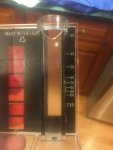The Taylor test is about as good as it gets for a residential pool test. There are some very expensive photometric measuring devices (turbidity meters) that use blanks and NIST standards and can get you accuracy down to 0.1ppm or lower....but they run north of $500. So not really something your average-joe pool owner can afford.
Simply following the testing guidelines here on TFP and the Taylor website and you'll be fine. It takes some getting used to but once you master it, it's an easy test. The test itself really is only good to +/-15ppm, so don';t sweat trying to make an exact value. Just do the test a couple of times by reusing the same solution by pouring it back and forth between the mixing bottle and tester and then average the results. Round up to the nearest 10ppm and call it a day. Bright sunlit days (high noon) is the best time to make the measurement. Indoor lighting will skew the test and give false results


